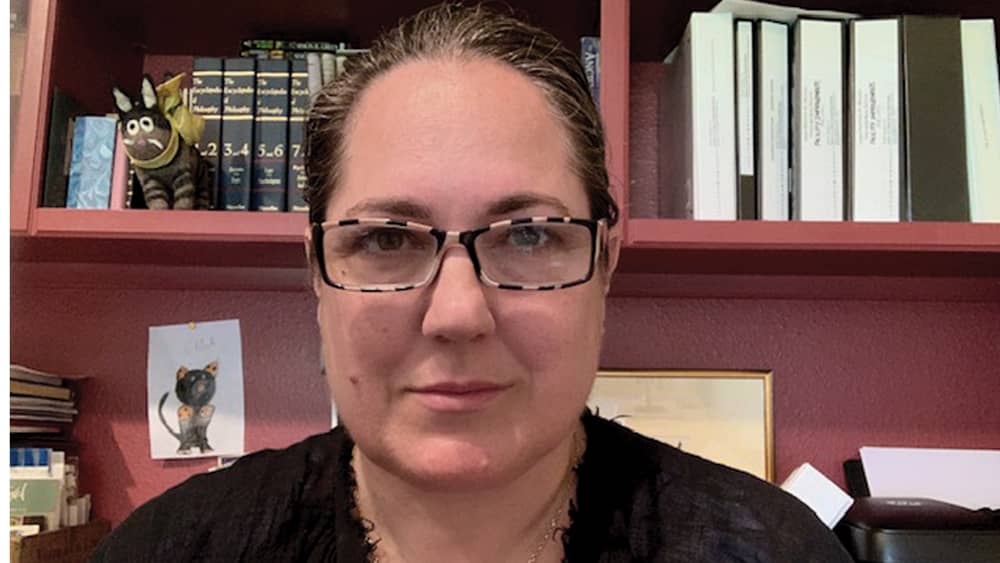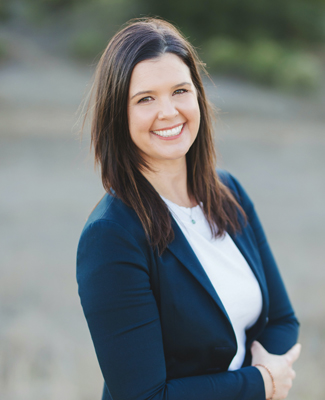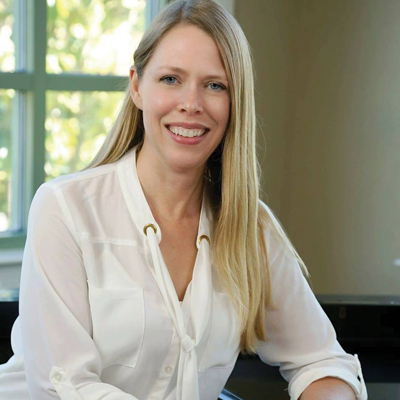
When the coronavirus spread last year, triggering the shelter-in-place order in mid-March, life as we knew it lurched to a stop. All but essential businesses, like law firms, hospitals, gas stations and supermarkets, and certain contractors, such as plumbers and farmworkers, had to shut their doors. Those businesses that could arrange for employees to work remotely adapted to the modern working climate. The rest of the businesses that required personal contact, such as restaurants, day-care centers and schools, had to close indefinitely.
Children, working mothers and families were confined to their homes—separated from contact with their usual support system of day care, schools, grandparents or friends. Everyone was afraid of the virus and therefore afraid of mail, groceries and contact with other people. Last year, no one knew how long this socially and economically punishing confinement would last, not to mention how long it could be endured. A month, maybe? Hard, but possible. More than a month? Not sure.
The economic consequences were hard for some, catastrophic for others. The social consequences were varied. Looking back, there was much to be learned from the “Year of Pandemic” — about how people managed and what they learned, but also about what longstanding and culture-threatening problems came to light.
Home as office and school
When she saw the signs of a pandemic forming in late February 2020, Katherine Philippakis, a partner in a large San Francisco law firm with offices in St Helena, began working from home. She took her two children, then in the second and fourth grade, out of school. As a single mother, with an intense professional practice to maintain, her first priority was to avoid the virus and stay healthy so she could take care of her children and her clients.
Working in her large, comfortable house, she at least had space and plenty of work. But, in addition to work and supervising the schooling of her two children, she now had a third job—the new, elaborate, COVID-household management routine at the time involving meticulous virus-prevention chores (staging, disinfecting and sorting mail, wiping down groceries, food ordering and stocking, and endlessly sanitizing everything) that her former, pre-COVID, housekeeper would have done. She was working triple time, alone, without her usual support system.
“I knew that for the safety of my family, I had to remain healthy. That meant sleep. I could not stay up till 2 a.m. working, because of what it would do to my immune system.” – Katherine Philippakis, partner, Farella Braun + Martel in St. Helena
The fact that so many people were working from home had a kind of equalizing effect, even in the professional realm. “I did Zoom calls with people in their bedrooms,” says Philippakis, “presumably because they had no place else that was quiet.” Her young children conducted most of their schoolwork online. It made home-schooling possible, but she found that online learning had its drawbacks.
Zoom school
Watching children on computers was hard. “I’d deliberately sent my children to a school that was low tech, so they didn’t use computers until the fifth grade,” says Philippakis. Suddenly, they had Chromebooks sent to them from school. They needed her to help get them up to speed. “I would try to leave open [a window of] time that they were on Zoom, so I could help as much as possible.” Other than the common complaint of missing their friends, Philippakis noted that the kids experienced emotional consequences from the long isolation from their friends. “More anxiety. They are two years apart, so they always fought a little bit, but that was ameliorated by the fact that they could spend time with their friends,” she says. “Now without friends, they’re resentful of each other and dependent on each other for their social life in a way they’ve never been before. The emotional pitch is much higher.” Disturbing also, is that she noticed when they made the shift to computer learning and playing video games to relate to their friends, a reduction in their attention spans occurred. “The shift in their attention span was almost immediate,” Philippakis says.

As a result, many expectations changed, or were put aside. “I knew that for the safety of my family, I had to remain healthy,” says Philippakis. “That meant sleep. I could not stay up till 2 a.m. working, because of what it would do to my immune system.” She loosened up on lesser issues too. “I gave up on clearing out my inbox and having a clean desk,” she says. “Those kinds of things I stopped worrying about because there wasn’t time. I had to work as efficiently as possible and take care of things and then go to bed and sleep.”
The expectations of her clients changed, too. “I have a nice group of clients,” she says. “So, people were sympathetic.” She describes being on a Zoom call once, and her boys were fighting in the background and the client just laughed and suggested maybe she put them on mute. “People were very gracious.”
She was furloughed from her previous employer as a result of the COVID shutdown and had suffered financially while putting on her “Supermom” hat and keeping it all together. – according to Meghan Avila, partner of Celaya Law, Napa
However, expectations from work could not be relaxed. “Everyone was under tremendous stress. I felt as if I were constantly sending emails saying, ‘I apologize for the delay,’ because I felt constantly behind. I think that’s true for many people,” Philippakis says. “Trying to hold together work demands and home demands is very difficult.”
Flexible work schedules
A flexible employer can change a life. Meghan Avila, a partner at Celaya Law, an estate planning firm in Napa, remembers that when the firm, having downsized as result of the pandemic, considered taking on a new employee as a client care relations manager. They realized they were taking someone who was also a full-time mom. “In talking with her, I learned how, in the shut-down, she became an overnight home-schooler,” says Avila. “Plus, there was this underlying grief and anxiousness.” She was furloughed from her previous employer as a result of the COVID shutdown and had suffered financially while putting on her “Supermom” hat and keeping it all together. Avila and the firm took a chance. “As an employer, in a time like this, we had to be flexible,” says Avila. The firm hired the young woman and arranged for a flexible work schedule to accommodate her childcare needs. For Avila, honoring family responsibilities made sense. She says she has clients who were in the same position as her new client care relations manager, and she felt being flexible was just the right thing to do.

Her clients often have their children with them on Zoom calls. “They can’t afford outside care,” she says. “Or, if we’re meeting in person, they bring children to the meeting.” For Avila, and the rest of the firm, this is something they are proud of. “Personally, I love kids,” she says. “And we are a firm that is all about family relationships and estate planning. I love it. It’s refreshing.” The shutdown was hard on everyone, but they managed by being flexible. “It’s doable,” she says. “We’re still navigating through these times. So, we just try to be flexible and understanding.”
When it’s time to be really flexible
“One thing I’ve learned about the pandemic is that I will never again complain about our crazy schedule,” says Catherine Eisele, who, with her husband, Alexander, runs a small family business, the Volker Eisele Family Estate, in the Chiles Valley District of Napa Valley. “A lot of people were saying, ‘Oh, it’s been so nice, we’ve kind of slowed down, and taken more time with family,’ and I understand that,” she continues in regards to working at home. “But I really loved our hectic schedule. Work. Kids’ sports. I just missed the interaction with others. I think people miss the human connection.”
Suddenly having the children at home meant juggling work and helping two young children with online schooling. “My productivity is directly related to the business income,” she says. “No one else is going to do my job for me, and there wasn’t anyone to take up the slack, we had to get creative and think about Zoom wine tastings [with clients] and different outlets while we’re trying to seem as if we’re remaining sane! I don’t think the school knew what to do either, in the beginning.”

It was hard on the kids. “My kids enjoy school [St. Helena primary and St. Helena elementary] and missed their friends,” she says. Learning by Zoom did not thrill them. “The older one got along. But, for the younger one, it was horrible,” she says. “Horrible. To the point where I would say, ‘Just go out and play!’ It was horrible not because of anything the school was or wasn’t doing. It’s just that he wasn’t interested in looking at a screen and trying to interact.”
School re-opened in August, but then came the Hennessy fire. So much for school. “We were consumed with concern that we were losing our house and our business,” says Eisele. “And it was a real double whammy that both our home and our business were threatened.” We had significant damage at the vineyard and lost the entire 2020 crop, but the family home and our home were both saved. But, by the time they settled back in, the Glass fire started. “We were evacuated again,” she says. Still no school.
What kept her sane? “I happen to have a fantastic husband,” she says with a laugh. “He’s got a great positive outlook. Kids, in general, are so resilient and they still want to go out and play, or show you the art they just made. You have to put on a great face, and be more forgiving of others and also to yourself.”
Will working remotely continue?
When COVID-19 hit a year ago, the George Petersen Insurance Company was deemed essential and remained open because of the nature of the business. Robb Daer, chief operating officer, writes in that, when the shelter-in-place was announced, the firm sent most of their employees home to work remotely. “The thing we did that created the most flexibility was allowing employees to work from home. We were flexible on how [employees] ‘completed’ their workday, since they had to juggle the hours with homeschooling their kids. We had many employees sending emails late in the evening and in the very early hours of the morning.”
“These children who aren’t in quality care or school-age children who are struggling in Zoom classes–that’s our future workforce.” – Ananda Sweet, vice president of public policy and workforce development for the Santa Rosa Metro Chamber

Allowing flexibility paid off. “We didn’t lose any female employees because of their responsibilities with kids,” writes Daer. He notes that the company suggested to some employees, who were particularly stressed with multiple responsibilities at home and at work, that they take advantage of the Families First Coronavirus Response Act (FSCRA), which was designed to provide paid emergency leave for employees who were needed at home. Being flexible added more work to the company as well as the employees, Daer admits, but he writes, “We didn’t see keeping all employees in the office as an option. The education of their kids was more important than insurance.” Daer expects that likely some level of flexible work style is to continue. “Everyone has a different level of comfort when it comes to what they want to be exposed to.”
Child care
In 2017, the Tubbs fire, which ravaged Santa Rosa, brought into focus the need for child care as 15 day-care centers were shut. “About 500 licensed child care slots were lost overnight,” says Ananda Sweet, vice president of public policy and workforce development for the Santa Rosa Metro Chamber. Sweet has been working since then to encourage employer-supported child care and the COVID-19 shutdown drove the point home. “Working at home, with your kids, it’s not sustainable,” says Sweet. “We need to see child care as an essential part of the infrastructure.” She sees the need for child care as an issue both for the society at large and the future of the workforce. “It’s an immediate issue—if you’re talking about today’s employees—but it’s also a huge future workforce issue,” she says. “These children who aren’t in quality care or school-age children who are struggling in Zoom classes—that’s our future workforce.” She considers it a challenge for the community at large.
The problem is: how to create it? “Child care is really unaffordable for everybody. It costs too much for families, nearly no matter who you are, though obviously, there’s a bigger impact for some than for others,” says Sweet. “Then too, providers don’t make anywhere near enough money. For them, trying to make a business or a living at it, doesn’t pencil out. It’s an expensive business to run.” Employers may want to be a part of the solution, for their own sake, for their employees, but the cost so far, is a barrier. “Every business we talked with said they did not want to be in the business of operating a child-care center,” says Sweet. “But with the needed support and resources, many would be willing to go through an RFP process and bring a provider onsite to operate a center on their site for their employees.”
A hidden problem
COVID-19 has a problem nobody talks about. While every person and situation is different, it’s safe to say that families sequestered together under the shelter-in-place order feared contracting or spreading the virus, were unable to go out for the habitual recreation, and dealt with the everyday challenges of work. While different people manage stress differently, there are commonalities easily recognized: over-eating, watching more TV, spending more time online working or chatting with friends. Maybe we read more, worry more, complain more. Maybe we take out our frustrations on each other, or the children. Maybe we yell more. And that brings us to wonder: Did incidences of domestic violence increase during the COVID-19 shut-down?
“I’d call upon employers, if they haven’t already, to deal with the corporate environment first. Have policies in place that identify domestic violence and create a pathway forward in the corporate community to support anyone who may need help.” – Donna Garske, Executive Director, Center for Domestic Peace, San Rafael
Center for Domestic Peace, in Marin, along with other domestic violence organizations throughout the area, did notice a change in their rate of calls. “At first things got quiet,” says Executive Director Donna Garske. “But as we started to settle into the reality that sheltering-in-place was going to be around for a while, calls picked up.” The number of calls surpassed pre-pandemic numbers and in other areas stayed about the same. What changed, and what was concerning was the intensity of the violence. “We noticed three things,” says Garske. “An increase in the risk of lethality of domestic violence, with strangulation in particular; an increase in violence to pregnant women: and an increase in rapes of women after they’ve separated from their abusers.” All extremely dangerous and personal crimes.
At first glance, one might be inclined to blame the intensified violence on the isolated and confined conditions of COVID. But Garske cautions against too quick of a conclusion. After all, she points out, both partners in a household are experiencing the same stress factors. (Domestic violence is typically male toward female, but can also occur within same-gender relationships.) “You don’t see an increased rate of women being violent to their partners,” she says. Why is that? Garske explains that to do a violent act—to hit a partner, for example—you have to make a decision. “You make a decision to hit,” she says. “And [the decision] comes from a belief system that gives permission to that behavior.” COVID-19 did not cause domestic violence, but for some people, the conditions around it intensified a pattern that, most likely, was already in place with deadly results. “It’s the belief in the right to be dominant and superior,” she says. This gives the abuser the inner permission to do violence to his partner and assure his superiority. COVID-19 challenged that superiority to the core; it challenged masculinity to many men because of increased vulnerability. “It’s like, ‘I might actually get sick. And then who would I be if I were sick?’”
We may see in the media that COVID-19 brought about an increase in domestic violence, “But I think what COVID has done is reveal it,” says Garske. Domestic violence is usually kept hidden from view, but we know that women were being abused before COVID-19, and there will be domestic violence after the pandemic leaves. “When COVID-19 first began, we were promoting this idea of “sheltering-in-peace.” The idea was, and is, to use the opportunity of pandemic to build strength within relationships and family and to live up to what it means to shelter in peace. Can employers help with this “hidden” problem? “I’d call upon employers, if they haven’t already, to deal with the corporate environment first,” says Garske. “Have policies in place that identify domestic violence and create a pathway forward in the corporate community to support anyone who may need help.” To those suffering from abuse or violence, Garske’s personal message is clear: “If you are being impacted by domestic violence, there is a whole community of people here who care about you. Please contact us at Center for Domestic Peace. You don’t have to be alone.”
Supporting domestic peace
Garske offers some basic signals that can show up in the workplace: signs of physical injury; patterns of inconsistency, tardiness, difficulty focusing; isolating or withdrawal. Domestic violence thrives on isolation.
She reminds employers that it’s important to know that possibly, someone in their workplace may be a victim—or perpetrator—of domestic violence. Depending on the size of the company, there are different requirements and new laws for what workplaces are required to do around domestic violence. Employers can always call Center for Domestic Peace for additional information and guidance. (Visit centerfordomesticpeace.org.)
As we move into summer, what lessons can we take away from the year of the pandemic? Several thoughts were expressed by almost everyone–about the pleasures of working from home, the value of flexibility and keeping a positive attitude. Katherine Philippakis shared all these and also found herself thinking about the responsibility for one’s own emergency preparedness. “I will always have the pantry stocked, and water, and those kinds of things, going forward,” she says. “The ability to have all the normal systems be in disarray and to still function and still have a laugh about it was important. To not take oneself so seriously. To recognize that there’s a wide spectrum of what professionalism is. Mostly being respectful of ourselves and others.” And then, she pauses to reflect, “Gratitude!” Even down to having a roof over one’s head, food in the pantry, water—to remember what a gift are those simple things which so many people, all over the world and right here among us, lack. We can curse COVID-19 and also give thanks for what we’ve learned, and carry the lessons into the summer and whatever the next emergency might bring.
Study Shows COVID-19 Cost Women Momentum in the Workplace
As many as 2 million women are considering leaving the workforce due to the challenges created by the COVID-19 crisis.
In a six-year study of Women in the Workplace, McKinsey and Co., in collaboration with leanin.org, has been tracking the progress of women at work in America. In 2020, data collected from 40,000 individuals from July through August showed that, while the conditions for women in the workplace were gradually improving, the trend for women in the workplace, as result of furloughs, or lay-offs, especially for women of color, suffered a dramatic reverse.
The study noted that some of the challenges that women suffered were already present such as the difficulty of working and caring for children. However, the circumstances around COVID made them more difficult. Working mothers are no strangers to the reality of “double shift,” working full-time and having full time responsibility for children. But during the pandemic, day-care centers and schools closed. Friends or grandparents were not allowed visits and women, with or without partners, had to manage within the confines of their households.
According to the study, more than one if four women are contemplating what many would have considered unthinkable just six months ago—downshifting their careers or leaving the workforce completely.



